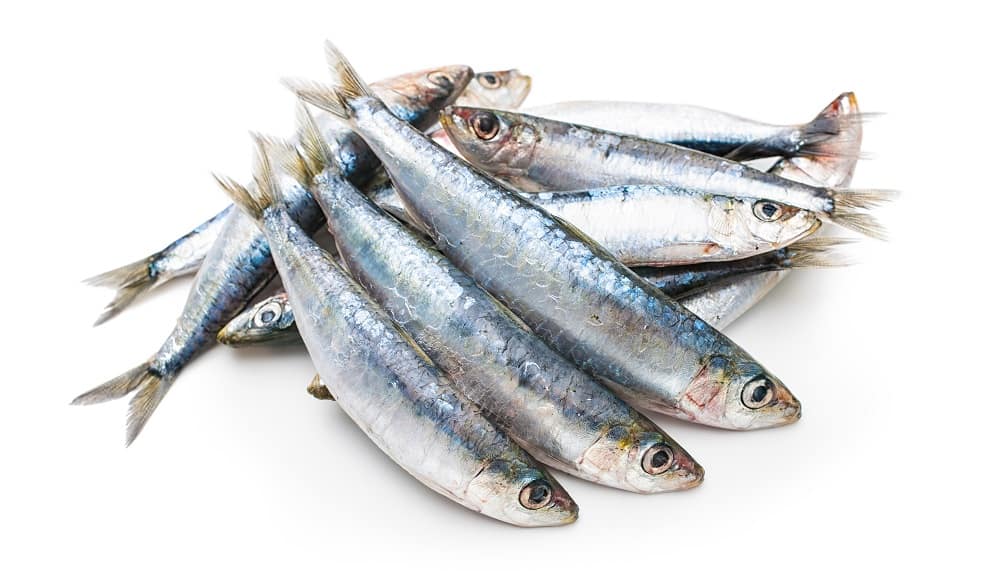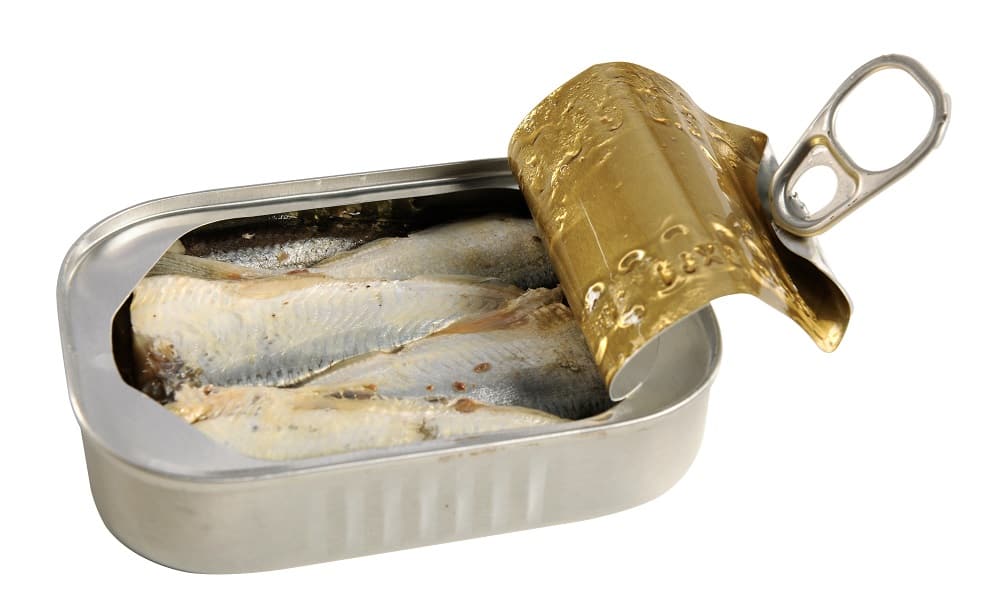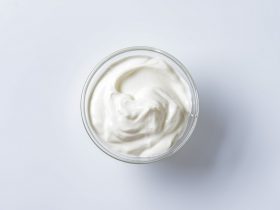Eating a varied and balanced diet during pregnancy is important for ensuring both maternal well-being and good pregnancy outcomes (Marangoni et al., 2016). Therefore, it is important for pregnant women to make informed choices regarding the food they eat – whether or not these are nutritious and safe. When it comes to seafood, some are actually essential in the diet of pregnant women, while others are to be avoided to prevent harm to the unborn baby.
Sardines are one of the best choices of fish for consumption during pregnancy. They are packed with nutritional benefits like protein and omega-3 fatty acids. They also have little mercury content unlike the larger kinds of fish.
While the health benefits of eating fish have been backed up by scientific evidence, there are also certain risks for consuming specific types of fish. Eating sardines, in particular, can be beneficial during pregnancy. Recommendations have been made by food authorities to help pregnant women make safe decisions.
Role of Fish Consumption in Pregnancy

Seafood is an excellent source of protein, zinc, iron, choline, folate, iodine, vitamins A, D, B6 and B12, and the long chain polyunsaturated fatty acids (LCPUFA) omega-3 and omega-6. These are nutrients that are key to supporting neurocognitive development in infants (Spiller et al., 2020).
The human body has limited capacity to synthesize LCPUFA. Hence, they are termed “essential” fatty acids, meaning they can only be obtained through the diet. During pregnancy, docosahexaenoic acid (DHA) and eicosapentaenoic acid (EPA) have been shown to provide beneficial effects (Marangoni et al., 2016; Nykjaer et al., 2019).
Seafood is the main source of DHA in the diet and contains higher DHA compared to other foods like meat and eggs (Spiller et al., 2020). Because of this, the fetus is largely dependent on the maternal diet for these essential fatty acids to be transported across the placenta. In the same manner, there is increased dietary requirement for fatty acids in pregnant women to meet the demand for maternal-fetal exchange (Nykjaer et al., 2019).
DHA is essential for fetal brain and retinal development as it is the major LCPUFA contained in the human brain and retinal rods. It has also been shown to reduce the chances of premature birth and postpartum depression (Marangoni et al., 2016), as well as improved cardiovascular health later in life (Kominiarek et al., 2017).
The 2010-2015 Dietary Guidelines for Americans (DGAC) reported that a minimum of two servings of seafood per week was associated with improved health outcomes in infants (Spiller et al., 2020). These include improvement in visual recognition memory (Oken et al., 2005), faster attainment of developmental milestones (Oken et al., 2008a), improvement in prosocial behavior, acquisition of fine motor and communication skills, and verbal IQ (Hibbeln et al., 2007), and better visual motor ability (Oken et al., 2008b).
Likewise, in 2014, the US Food and Drug Administration (FDA) reported that seafood consumption during pregnancy was associated with benefits in neurocognitive outcomes. It presented studies which showed that seafood intake was associated with better IQ and psychomotor development (Lederman et al., 2008), decreased risk of attention deficit / hyperactivity disorder (ADHD) (Sagiv et al., 2012), and better motor scores (Suzuki et al., 2010).
In 2018, Middleton et al. did a systematic review of 70 randomized controlled trials comparing interventions with omega-3 LCPUFA and placebo. They concluded that overall, there was a reduction in preterm birth less than 37 weeks age of gestation (AOG) and early preterm birth less than 34 weeks AOG with pregnant women who consumed omega-3 fatty acids.
In contrast, diets lacking in fish were found to be deficient in DHA and EPA. In the United States, it is approximated that about 80% of the population does not consume the daily recommended amount of EPA and DHA, which is 250-500 milligrams per day. Insufficient intake of omega-3 LCPUFA is the second leading cause of diet-related mortality in the United States, after high salt consumption (Marangoni et al., 2016).
Excessively low DHA concentrations in the blood were reported in women who follow an exclusive vegetarian diet and those who do not eat fish adequately (Marangoni et al., 2016). Available evidences point out that fish oil supplementation does not confer the same health benefits as consumption of actual fish (Kominiarek et al., 2017).
Risk of Mercury Contamination in Fish
Despite the many health benefits of eating fish, there are still certain concerns regarding contamination with mercury. Rightly so, high levels of mercury in children have been found to be associated with memory deficits, learning issues and problems with behavior (Kominiarek et al., 2017). During pregnancy, regular consumption of fish high in mercury can lead to its accumulation in the blood over time.
Humans are primarily exposed to mercury from consumption of fish and seafood. It has been recognized by many studies as a neurological toxin (Wells et al., 2018). In 2017, Jeong et al. demonstrated a reduction in verbal IQ in children associated with high maternal blood mercury levels.
Cardiovascular toxicity may also be an adverse outcome from exposure to mercury. In 2018, Wells et al. showed a significant association between higher levels of methyl mercury and higher systolic blood pressure and pulse pressure.
In contrast, Hibbeln et al. in 2018 showed that maternal blood mercury levels were not associated with adverse effects on cognitive function as measured by IQ, particularly for tests of mathematics and science. Similarly, Patel et al. in 2019 found little evidence of any association between low levels of prenatal mercury exposure and adverse outcomes in the behavior of children.
In spite of these inconsistencies with data about mercury contamination of fish, the European Food Safety Authority (EFSA) recommends consumption of 1-2, and even up to 3-4, servings of fish per week during pregnancy to ensure proper development of their babies. They emphasized that these levels of fish intake were found to have no association with significant risk of contamination with mercury. They also reported that intake of more than 3-4 servings of fish per week did not anymore provide any additional health benefit (Marangoni et al., 2016).
Likewise, consumption of 2-3 servings (or 8-12 ounces) per week of a variety of seafood has been recommended by the US FDA for all pregnant women, provided that they choose those that have lower mercury content. One of the “best choices” for fish consumption during pregnancy, according to their guidelines, is sardines.
However, fish with high mercury content should be avoided throughout pregnancy. These include shark, swordfish, tilefish, and king mackerel (Kominiarek et al., 2017).
Is it Safe to Consume Sardines While Pregnant?

Sardines are small fish that are said to be named after Sardinia, an island in Italy where they could be found in abundance. Sardines can also be found in the Atlantic, Pacific and Mediterranean seas. They feed only on planktons, therefore they do not contain as much mercury as other, bigger fish.
Sardines are a good source of omega-3 fatty acids, protein, calcium, vitamins and minerals. According to Koletzko et al. (2018), by consuming one portion per week of oily sea fish, including mackerel, herring or sardines, the recommended quantity of DHA of at least 200 milligrams per day in pregnancy can be achieved.
The EFSA, likewise, recommends that pregnant women preferably choose the smallest fish, such as sardines, anchovies and mackerel in order to achieve optimal amounts of DHA and EPA, while lowering the risk of mercury contamination (Marangoni et al., 2016). Kominiarek et al. (2017) agrees and said that it is ideal for pregnant women to consume salmon, sardines and anchovies, which are fish that are high in omega-3 fatty acids but low in mercury content.
Final Thoughts
Sardines are an excellent source of omega-3 fatty acids. Consumption of DHA, in particular, is especially important during pregnancy because of its benefits for the neurologic, cognitive and visual development of babies in utero. Another good thing about sardines is its low mercury content compared to larger types of fish.
For pregnant women in general, fish are part of a healthy, balanced and nutritious diet. Sardines are an excellent choice for pregnant women who wish to achieve the recommended 2-3 servings of fish and seafood consumption per week. However, for more individualized dietary concerns, pregnant women should seek the help of their health care physicians.
References
- https://www.epa.gov/fish-tech/epa-fda-advice-about-eating-fish-and-shellfish
- https://www.fda.gov/food/consumers/advice-about-eating-fish
- Hibbeln, J., Davis, J., Steer, C., Emmett, P., Rogers, I., Williams, C., & Golding, J. (2007). Maternal seafood consumption in pregnancy and neurodevelopmental outcomes in childhood (ALSPAC study): An observational cohort study. Lancet 369(9561), 578-585. doi: 10.1016/S0140-6736(07)60277-3
- Hibbeln, J., Gregory, S., Iles-Caven, Y., Taylor, C., Emond, A., & Golding, J. (2018). Total mercury exposure in early pregnancy has no adverse association with scholastic ability of the offspring particularly if the mother eats fish. Environment International 116, 108-115. doi: 10.1016/j.envint.2018.03.024
- Jeong, K. S., Park, H., Ha, E., Shin, J., Hong, Y. C., Ha, M., …, & Kim, Y. (2017). High maternal blood mercury level is associated with low verbal IQ in children. Journal of Korean Medical Science 32(7), 1097-1104. doi: 10.3346/jkms.2017.32.7.1097
- Koletzko, B., Cremer, M., Flothkotter, M., Graf, C., Hauner, H., Hellmers, C., …, & Wockel, A. (2018). Diet and lifestyle before and during pregnancy: Practical recommendations of the Germany-wide Healthy Start – Young Family Network. Geburtshilfe und Frauenheilkunde 78(12), 1262-1282. doi: 10.1055/a-0713-1058
- Kominiarek, M., & Rajan, P. (2017). Nutrition recommendations in pregnancy and lactation. Medical Clinics of North America 100(6), 1199-1215. doi: 10.1016/j.mcna.2016.06.004
- Lederman, S. A., Jones, R., Caldwell, K., Rauh, V., Sheets, S., Tang, D., …, & Perera, F. (2008). Relation between cord blood mercury levels and early child development in a World Trade Center cohort. Environmental Health Perspectives 116(8), 1085-1091. doi: 10.1289/ehp.10831
- Marangoni, F., Cetin, I., Verduci, E., Canzone, G., Giovannini, M., Scollo, P., …, & Poli, A. (2016). Maternal diet and nutrient requirements in pregnancy and breastfeeding: An Italian consensus document. Nutrients 8(10), 629. doi: 10.3390/nu8100629
- Middleton, P., Gomersall, J., Gould, J., Shepherd, E., Olsen, S., & Makrides, M. (2018). Omega-3 fatty acid addition during pregnancy. Cochrane Database of Systematic Reviews 2018(11), CD003402. doi: 10.1002/14651858.CD003402.pub3
- Nykjaer, C., Higgs, C., Greenwood, D., Simpson, N., Cade, J., & Alwan, N. (2019). Maternal fatty fish intake prior to and during pregnancy and risks of adverse birth outcomes: Findings from a British cohort. Nutrients 11(3), 643. doi: 10.3390/nu11030643
- Oken, E., Osterdal, M., Gillman, M., Knudsen, V., Halldorsson, T. I., Strom, M., …, & Olsen, S. (2008a). Associations of maternal fish intake during pregnancy and breastfeeding duration with attainment of developmental milestones in early childhood: A study from the Danish national birth cohort. American Journal of Clinical Nutrition 88(3), 789-796. doi: 10.1093/ajcn/88.3.789
- Oken, E., Radesky, J., Wright, R., Bellinger, D., Amarasiriwardena, C., Kleinman, K., …, & Gillman, M. (2008b). Maternal fish intake during pregnancy, blood mercury levels, and child cognition at age 3 years in a US cohort. American Journal of Epidemiology 167(10), 1171-1181. doi: 10.1093/aje/kwn034
- Oken, E., Wright, R., Kleinman, K., Bellinger, D., Amarasiriwardena, C., Hu, H., …, & Gillman, M. (2005). Maternal fish consumption, hair mercury, and infant cognition in a U.S. cohort. Environmental Health Perspectives 113(10), 1376-1380. DOI: 10.1289/ehp.8041
- Patel, N., Xu, Y., McCandless, L., Chen, A., Yolton, K., Braun, J., …, & Lanphear, B. (2019). Very low-level prenatal mercury exposure and behaviors in children: The HOME study. Environmental Health 18, 4. doi: 10.1186/s12940-018-0443-5
- Sagiv, S., Thurston, S., Bellinger, D., Amarasiriwardena, C., & Korrick, S. (2012). Prenatal exposure to mercury and fish consumption during pregnancy and attention-deficit/hyperactivity disorder-related behavior in children. Archives of Pediatrics & Adolescent Medicine 166(12), 1123-1131. doi: 10.1001/archpediatrics.2012.1286
- Spiller, P., Hibbeln, J., Myers, G., Vannice, G., Golding, J., Crawford, M., …, & Carlson, S. (2020). An abundance of seafood consumption studies presents new opportunities to evaluate effects on neurocognitive development. Prostaglandins, Leukotrienes & Essential Fatty Acids 151, 8-13. doi: 10.1016/j.plefa.2019.10.001
- Suzuki, K., Nakai, K., Sugawara, T., Nakamura, T., Ohba, T., Shimada, M., …, & Satoh, H. (2010). Neurobehavioral effects of prenatal exposure to methylmercury and PCBs, and seafood intake: Neonatal behavioral assessment scale results of Tohoku study of child development. Environmental Research 110(7), 699-704. doi: 10.1016/j.envres.2010.07.001
- Wells, E., Herbstman, J., Lin, Y. H., Hibbeln, J., Halden, R., Witter, F., & Goldman, L. (2018). Methyl mercury, but not inorganic mercury, associated with higher blood pressure during pregnancy. Environmental Research 154, 247-252. doi: 10.1016/j.envres.2017.01.013




